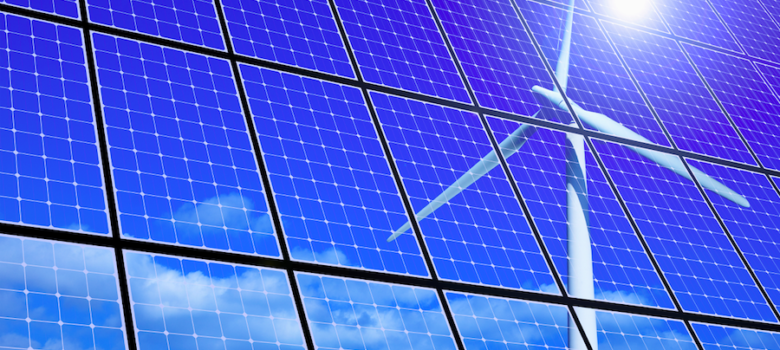
What is photosynthesis?
Photosynthesis is the process by which green plants use sunlight to synthesise foods from carbon dioxide and water. The process combines 6 molecules of carbon dioxide and 6 molecules of water to produce one molecule of glucose and 6 oxygen molecules. The glucose is stored in the plant as starch and cellulose which are simply long chain glucose molecules (known as polysaccharides) as a source of food for the plant to survive and grow. The oxygen that is produced as a byproduct of photosynthesis is what most animals rely on to breath, so the process plants and trees fulfil on our behalf is critical to our survival.
We already can harness light energy from the sun to produce electricity via solar photovoltaic cells, however there is a fundamental issue with electricity that we are currently facing and that is that we have no suitable way of storing the electricity produced (batteries are limited), so we have to use the electricity as it is produced otherwise we essentially lose it.
The beauty of photosynthesis is that it locks energy from the sun within the chemical bonds in the glucose molecule. Therefore plants are not only producing energy, but they also have the ability to store it.
Artificial photosynthesis
If we could somehow artificially replicate the photosynthetic process completed by plants, we would be able to lower carbon dioxide concentrations in the atmosphere, while also producing sugar that we could use for food and energy production. The ultimate goal though is to take the natural process of photosynthesis and improve it, making it more efficient, absorbing more light, at a wider range of wavelengths, potentially even in the dark to produce more energy.
There are three major scientific challenges in artificial photosynthesis that we need to find answers to before we can create fuel directly from sunlight on an economical scale:
1. Light capture and moving the electrons to the reaction centres
2. Splitting water into Hydrogen and Oxygen
3. Reducing Carbon Dioxide
Overcoming the challenges in artificial photosynthesis
In plants, light capture is handled by leaves which contain the green pigment chlorophyll. This pigment (along with accessory chlorophyll pigments) absorbs all photons with a wavelength of ~430-700nm, and through a complex process first splits water into its constituent parts, then combines hydrogen with carbon dioxide to make the sugars. In artificial photosynthesis we are proposing to use nanoparticles to not only replicate this process but improve its efficiency.
If we use light capturing titanium dioxide nanoparticles on any surface it dramatically increases the surface area and therefore the light capturing potential of the surface. If this titanium dioxide is coupled with a dye and then immersed in an electrolyte solution with a platinum cathode, electrons are excited to the extent they are displaced and produce a current.
This current can then be used to split the water into its molecular components, thereby storing the solar energy in chemical bonds, particularly in the reduced form of hydrogen, again in the presence on nanoparticles, more specifically iridium oxide nanoparticles.
In the final part of natural photosynthesis (known to biologists as the Dark Reactions), carbon dioxide is captured by the chemical ribulose biphosphate, before undergoing the Calvin Cycle, eventually producing one molecule of glucose.
Scientists are currently trying to establish the most efficient form of naturally occurring ribulose biphosphate, with a view to making a wholly artificial nanotechnology-based version that is more efficient than it’s naturally occurring relative.
Artificial photosynthesis research today
There are many barriers to actually recreating the natural process of photosynthesis that we need to overcome, so we are still very much in the early research and development phase on making artificial photosynthesis as a viable energy source.
Research is going on all over the world currently trying to crack what could one day become the renewable fuel of the future, not only using the sun’s energy more effectively than Solar PV currently does (and leaves themselves), but also helping to remove some of the carbon dioxide that humans have added to the atmosphere through burning fossil fuels.
Thomas Fuance, a professor at the Australian National University, feels that artificial photosynthesis could one day be the game changer, providing cheap fuel for everyone in the world, regardless of location, and is pushing for a worldwide collaborative approach to research this area, similar to ITER, or the Human Genome project, sharing data and thereby concentrating on the most promising emerging technological solutions.
In August 2011 he coordinated the first international conference dedicated to the created of Global Artificial Photosynthesis Project at Lord Howe island.
Other approaches being used to mimic photosynthesis
Nanotechnology is not the only avenue we are using trying to mimic photosynthesis. Another method involves using giant parabolic mirrors direct and concentrate sunlight onto two chambers separated by a ring of cerium oxide. The energy from the sun heats this cerium oxide up to 15000c, which in turn releases an oxygen atom into one of the chambers and is pumped away. The deoxidised cerium is then moved into the other chamber, where carbon dioxide is pumped in, and the deoxidised cerium steals one of the oxygen molecules, creating carbon monoxide, and the more stable cerium oxide, which can be reused in the reaction. A similar reaction is used to separate water into its native elements, a hydrogen molecule and oxygen.
Finally, a process first carried out in the 1920s, named after its inventors Franz Fischer and Hans Tropsch, can be completed. The Fischer-Tropsch process involves reacting the hydrogen molecule with the carbon monoxide using a transition metal catalyst such as cobalt to produce a hydrocarbon that can then be used as a fuel.
Research experiments for the process outlined above have been created in the lab, however these reactions are currently unsustainable.
Artificial photosynthesis conclusion
As mentioned elsewhere on TheGreenAge, photovoltaic panels and solar heat collectors are two of our most popular mechanisms for taking advantage of solar energy, however these are currently both inefficient. As humans, we have really struggled to replicate nature’s photosynthetic process, where a plant transfers simple molecules into others with richer energy content, which is probably the most effective way to storing solar energy. Therefore, if either of the techniques above can be mastered, then we are going some way to replicate one of natures best kept secrets.
Benefits
- We are going someway to mimic natures most effective process for creating energy rich products from simple input materials.
- Producing a new fuel that can power vehicles from naturally occurring input materials, CO2, water and Sunlight.
- It makes Carbon storage more economically viable as the CO2 can be used to create a saleable product.
- If we are able to tap into existing big producers of CO2, such as power station exhaust we are able to use the CO2 twice before it enters the atmosphere.
Limitations
- So far the reactions are inefficient / unsustainable.
- The reaction needs the heat generated from the sunlight to power it, so is not suitable for operation worldwide.













Hi,
I’m thinking of using this website as a source for a school project I have…
I just wanted to know what date was this published?
no please dont
Dear Greenage Co.
I am a retired chemist and I deliver popularizing lectures for university chemical students. I would greatly appreciate having some general papers from you in the arrtificial photosynthesis topics that I could use in my talks. I would of course dutifully reference people to your work.
Best regards
László Nemes PhD DSc
science advisor emeritus
Research Center for Natural Sciences, Hung,. Acad. Sciences
Budapest HUngary
technically you don’t need the sun to lake photosynthesis plants turn UV lights into UV-a to UV-c it all depends on the plant chlorophyll, it is why some plants grow better in different continents because UV levels are different because of different weather.
you could use this to burn the oxygen it makes then funnel it back around
Interested in understand industrial applications of this process. Would be willing to work on a beta site startup.